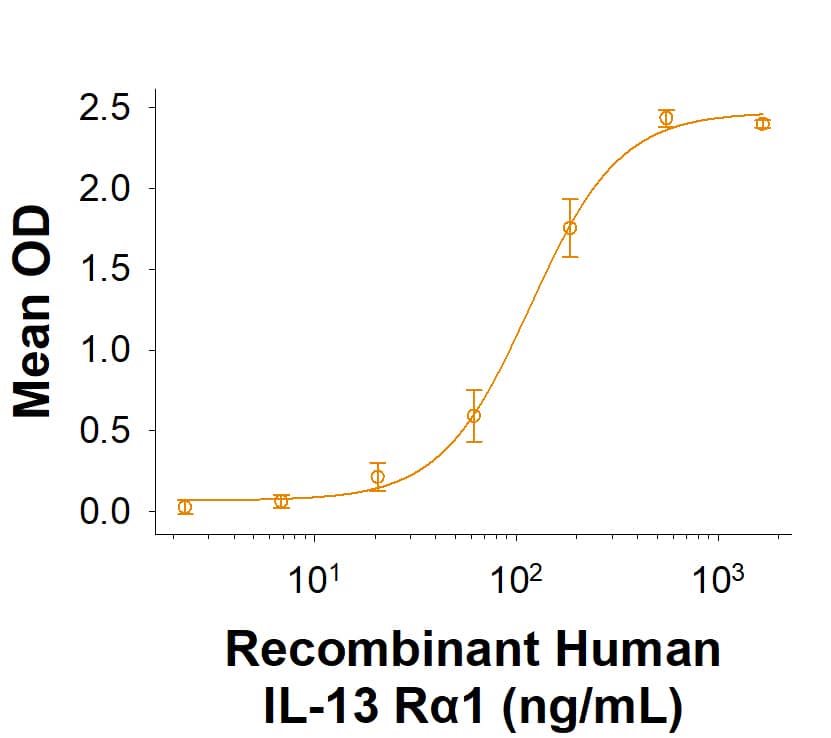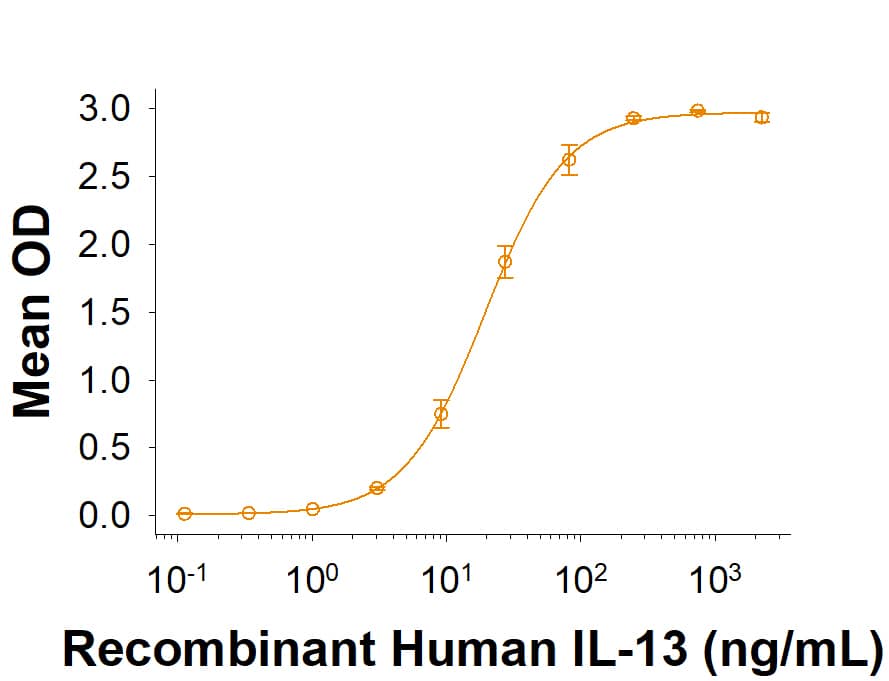IL-13 R alpha 1: Proteins and Enzymes
Two members of the type 5 subfamily of type I cytokine receptors can serve as receptors for IL-13. IL-13 can bind to IL-13 R alpha 1 (CD213a1; previously designated IL-13 R alpha or NR4) with low affinity, then recruits the IL-4 R alpha chain to form a high affinity receptor, causing downstream STAT6 activation. Alternately, IL-13 can bind IL-13 R alpha 2 (CD213a2) with high affinity; this interaction does not cause activation of STAT6, but does induce TGF-beta production. IL-13 R alpha 1 and IL-13 R alpha 2 each have three extracellular fibronectin type III domains, two cytokine receptor homology modules and a WSXWS motif typical of the class I cytokine receptor family, but IL-13 R alpha 2 has a much shorter cytoplasmic tail. IL-13 R subunits can be expressed on monocytes, macrophages, fibroblasts, human B cells, basophils, eosinophils, endothelial cells, and smooth muscle cells.
5 results for "IL-13 R alpha 1 Proteins and Enzymes" in Products
5 results for "IL-13 R alpha 1 Proteins and Enzymes" in Products
IL-13 R alpha 1: Proteins and Enzymes
Two members of the type 5 subfamily of type I cytokine receptors can serve as receptors for IL-13. IL-13 can bind to IL-13 R alpha 1 (CD213a1; previously designated IL-13 R alpha or NR4) with low affinity, then recruits the IL-4 R alpha chain to form a high affinity receptor, causing downstream STAT6 activation. Alternately, IL-13 can bind IL-13 R alpha 2 (CD213a2) with high affinity; this interaction does not cause activation of STAT6, but does induce TGF-beta production. IL-13 R alpha 1 and IL-13 R alpha 2 each have three extracellular fibronectin type III domains, two cytokine receptor homology modules and a WSXWS motif typical of the class I cytokine receptor family, but IL-13 R alpha 2 has a much shorter cytoplasmic tail. IL-13 R subunits can be expressed on monocytes, macrophages, fibroblasts, human B cells, basophils, eosinophils, endothelial cells, and smooth muscle cells.
| Source: | HEK293 |
| Accession #: | P78552.1 |
| Applications: | BA |
Biotinylated
| Source: | CHO |
| Accession #: | AAB37127.1 |
| Applications: | BA |
| Source: | NS0 |
| Accession #: | Q5JSL4 |
| Applications: | Bind |
| Source: | NS0 |
| Accession #: | O09030 |
| Applications: | BA |
| Applications: | AC |




